
17 minute read
BOOKS
NAMIB: THE ARCHAEOLOGY OF AN AFRICAN DESERT BY JOHN KINAHAN
UNIVERSITY OF NAMIBIA PRESS, 2021
The Namib Desert, on the southwestern coast of Africa, is one of the most hostile environments on Earth. Wits alumnus and Honorary Research Fellow in the School of Geography, Archaeology and Environmental Studies, Dr John Kinahan (BA Hons 1982, PhD 1989) has spent the past 40 years in a detailed archaeological study of the desert, searching its vast dune-fields, mountain ranges and gravel plains to piece together a human history covering the last one million years.
It is a story of extraordinary resilience and inventiveness which also tells of tragic loss, as tens of thousands of indigenous Namibians died at the hands of German settlers and soldiers in a genocidal frenzy that eerily prefigures events in Europe a few decades later.
The desert was emptied of its people and re-imagined in the colonial mind as a pristine and romantic wilderness. But Namib: The archaeology of an African desert (University of Namibia Press, 2021) offers a radically different narrative, digging beneath the usual evidence of archaeology to uncover a world of arcane rituals, of travelling rainmakers, and of intricate social networks which maintained vital systems of negotiated access to scarce resources.
Dr Kinahan has developed a unique regional synthesis which reviewers have praised for its originality and rigour. Rock art, usually treated as a field of study by itself, is marshalled here alongside archaeological evidence to present completely new insights into precolonial hunter-gatherer society, its effective domestication of the desert landscape and eventual adoption of domestic livestock.
Much new ground is broken; Dr Kinahan and his family lived among nomadic Ovahimba in the remote northwest of the country to learn the skills of pastoral life; there is also a careful interweaving of other sources that are not usually considered by archaeologists: women’s praise poems, missionary accounts, rainfall measurements and medical records from colonial concentration camps.
Namib is more than a work of scientific research; it is a love song to the desert and its people.
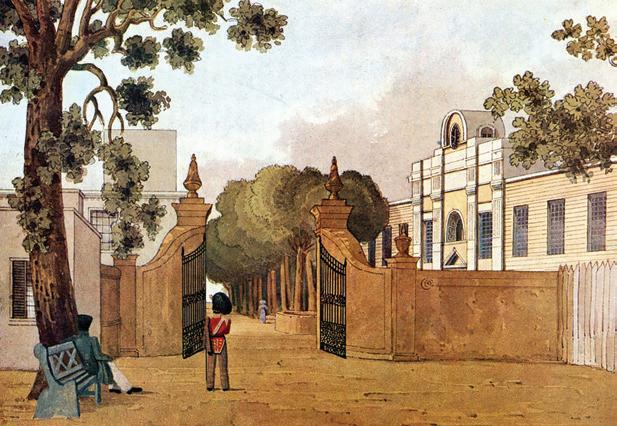
DE MEILLON’S LEGACY: ART, SCIENCE AND WAR BY LOUIS J CABRI AND ROGER W JAMES
FOOTPRINT PRESS, 2020
One of the world’s authorities on platinum minerals has turned his gaze to family history in his latest book De Meillon’s Legacy: Art, Science and War. Dr Louis J Cabri (BSc 1954, BSc Hons 1955) first became aware of Henry Clifford De Meillon (1800-1859) when Botha De Meillon, Cabri’s father-in-law, presented Cabri’s daughter Mimi with a copy of Anna Smith’s Cape Views and Costumes (1978) — a book on De Meillon’s water colours. De Meillon is recognised as one of the most significant South African artists of the early 19th century. Although Smith reproduced works from the Brenthurst Library and tried to establish the facts of De Meillon’s life, many questions remained.
Dr Cabri’s interest in genealogy and the family tree grew out of anecdotal comments, including that De Meillon’s ancestors were French Huguenots. His search for confirmatory documents led to many friendships, in particular with Roger James, a pathologist by training and himself a fifth generation descendant of De Meillon. Their collaboration has unearthed new discoveries, including a large body of unpublished art works, such as hydrographic charts, Cape wild flowers, views of the Cape, as well as later paintings from the Eastern Cape wild frontier. These add significantly to the portfolio of De Meillon’s known art, increasing his stature as an important South African artist. Many of the puzzles about his life and family have also been solved. The De Meillon family typifies many South African families. Their origins are diverse, and by the outbreak of the Anglo-Boer War, descendants found themselves on opposing sides of the conflict.
Dr Cabri was born to a Belgian father and Egyptian mother in Cairo in 1934. In 1946 his parents moved the family to the US and he went to high school in New York. They then moved to South Africa, and he completed matric in Johannesburg in 1951. A Wits guidance counsellor nudged him towards geology to complement his interest in chemistry, and after graduating at Wits he worked as a junior field geologist. After a few years in 1959 he married Mignon De Meillon, who went on to become a respected Canadian ceramicist. Dr Cabri furthered his studies at McGill University in Canada. The mineral cabriite was named after him in 1983 by Soviet scientists and he is the author of two books on platinum elements.
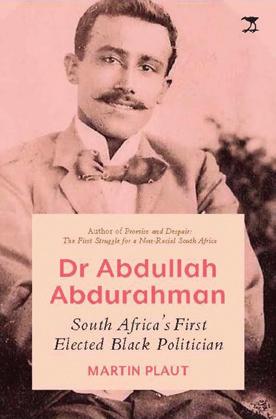
DR ABDULLAH ABDURAHMAN : SOUTH AFRICA’S FIRST ELECTED BLACK POLITICIAN BY MARTIN PLAUT
JACANA, 2020
Martin Plaut (BA Hons 1977) is a Senior Research Fellow at the Institute of Commonwealth Studies at the University of London. He has reported extensively on Africa for the BBC as Africa Editor. He’s led the Africa programme of the Royal Institute of International Affairs (Chatham House) and is an active member of the Royal African Society.
He has numerous books under his belt such as Understanding Eritrea: (Hurst, 2016), Promise and Despair: South Africa, 1899 – 1914 (Jacana, 2016) and Robert Mugabe (Ohio University Press, 2018) with Sue Onslow. His latest is Dr Abdullah Abdurahman: South Africa’s First Elected Black Politician which attempts to unearth a forgotten figure in South African history.
Dr Abdurahman (1872–1940) first won a seat in 1904 and served the city of Cape Town for 36 years, representing some of city’s poorest. Beloved by the people of District Six, he led the African Political Organisation — the leading coloured party of this period. He was a grandson of slaves, who trained as a doctor in Scotland, returning to the Cape with a Scottish wife, Nellie. He was a friend and ally of key political figures of his time: Sol Plaatje, Walter Rubusana, Mahatma Gandhi and WP Schreiner.
Stephen Langtry, a reviewer for Johannesburg Review of Books, writes that the project is “very much like salvaging a sunken ship or excavating an archaeological site” and “one wishes to understand why a ship sank or why a once majestic structure was abandoned”.
Much of the material of Dr Abdurahman’s life has been lost, but drawing on previously undiscovered material, this biography lifts Dr Abdurahman from obscurity – explaining his life against the background of the difficult times in which he lived.
“I hope that this is only the first biography about Dr Abdurahman. I hope that others find other elements that I have missed, because he is somebody who deserves it.
“We have begun to see over the past few years people of colour who took these kinds of positions. We can learn from them, we can understand what they gave to the country and how South Africa was not just built by whites and racists. It was built by people who stood in the completely opposite corner,” said Plaut in a radio interview. The biography does a good job of giving insight into the early anti-apartheid movement.
“He wasn’t somebody who only looked at state politics. He was an extraordinary man. He intervened to try and ensure that cricket could be played by ordinary people on the parade. He is somebody who ensured the New Year festivities would be celebrated. He was passionate about the False Bay area, he loved fishing, he was one of the first supporters of the Nature Reserve at Cape Point,” said Plaut.
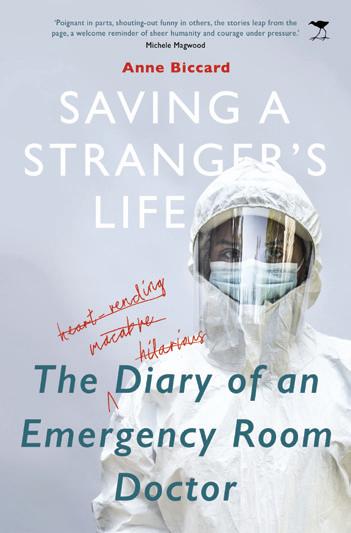
SAVING A STRANGER’S LIFE: THE DIARY OF AN EMERGENCY ROOM DOCTOR BY ANNE BICCARD
JACANA, 2020
Dr Anne Biccard (BA 1988, BA Hons 1989, MSc Med 1994, MBBCh 1996) is an emergency room doctor with more than 30 years’ experience. Her memoir — with the added dimension of COVID-19 — gives readers a view of life in a hospital, which the publisher describes as “both terrifying and thrilling, where death can be outwitted by skill and quick thinking, and the pressure eased by dark humour”.
As a child she read The Family Doctor: A counsellor in sickness, pain and distress by Prof Henry Taylor, with its hand-drawn pictures, explanations of diseases and treatments, but she took a circuitous route to become a doctor.
Originally studying law, she majored in psychology and English. “I had a morbid fascination with things medical. Medicine is my true love. It was the right thing to do, go back to medical school and spend 13 years at university,” she said during her virtual book launch.
The coronavirus pandemic threads throughout and Dr Biccard pays homage to the camaraderie among healthcare workers who purposefully and bravely place themselves in the line of fire to save strangers’ lives.
Death is a constant companion: “I sometimes joke with my colleagues about the Grim Reaper. I call him Grim, rather than Mr Reaper. No one can work in an ED without forming some kind of relationship with him. Grim always wins in the end, of course, but it is really pleasing to get a point on the board every now and again.”
The memoir is filled with anecdotes about the patients she encounters such as the woman who mistook Dettol for beer, a guy who tried to pull his own tooth with cable ties and someone who attempted to run down his cardiologist.
There are lyrical descriptions of life with her partner on a small farm where they provide a home to rescued greyhounds. She drives a motorcycle and finds solace in playing the piano or cello: “The music curls around the farmhouse and out of the open windows. A steady pull and slide, humming and purring under my touch. The gleaming cello sings to the silent furniture and polished floor. A breeze rustles the leaves in huge trees outside and shuffles the sheet music on the stand. It feels like the universe is breathing deeply.”
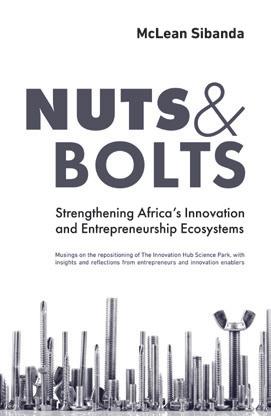
NUTS & BOLTS: STRENGTHENING AFRICA’S INNOVATION AND ENTREPRENEURSHIP ECOSYSTEMS BY DR MCLEAN SIBANDA
TRACEY MCDONALD PUBLISHERS, 2021
In his debut book, Nuts & Bolts, Dr McLean Sibanda (BSc Eng 1992, MSc 1995) captures insights from key players who sketch the “nuts and bolts” of their journeys of entrepreneurship and innovation. Dr Sibanda is an accomplished C-suite executive, patent attorney, engineer and internationally respected promoter of innovation. He was central to sub-Saharan Africa’s repositioning in Africa’s first internationally recognised science and technology park, the Innovation Hub, working as its CEO for seven and a half years (2011-2018).
The Innovation Hub, established as an innovation agency of the Gauteng province, seeks out innovators, researchers and entrepreneurs to work on novel ideas to improve the province’s service delivery and increase competitiveness of the local economy through ICT, bioscience, and the green and township economies. The book provides a perspective on challenges he faced overseeing the turnaround at the organisation and he gives insight into innovation initiatives that yielded value.
“During the lockdown I started to reflect on a number of things. People asked me about the Innovation Hub and the work done – stories of entrepreneurs. I hope the book will add value to developing a prosperous Africa,” he said in a recent interview with the SABC.
Nuts & Bolts is full of stories about real people and companies who are making a difference, with testimonies from entrepreneurs, experienced ecosystem builders and innovators. These include among others Martin Phakathi (founder and CEO Paks Acoustics); Nathacia Olivier (founder and CEO Ndoni Beauty Range); Paseka Lesolang (founder of Water Hygiene Convenience and Global Partnership Southern Africa); Terence Pokane (co-founder and Managing Director Makhamisa Foods); Ntuthuko Shezi (founder of Lifestock Wealth) and Tiyani Nghonyama (chief operating officer of Geekulcha).
“The important thing is, those who succeed are not the ones who set out to make a lot of money. The ones who succeed are the ones who set out to solve a problem, creating benefits to others and improving the wellbeing of society.”
Dr Sibanda is currently the MD of Bigen Global Limited. In 2007, he co-founded intellectual property firm Sibanda & Zantwijk Attorneys and Intangible Consulting/IdeaNav. He was the chief drafter of South Africa’s Intellectual Property Rights from Publicly Financed Research and Development Act and consults to the World Intellectual Property Organisation in addition to being a visiting lecturer at Africa University in Zimbabwe.
Dr Sibanda displayed his leadership and entrepreneurial talents during his time at Wits too as an avid tennis player. He is described as a “shining light” in the archives of the university’s sport.
“I coached the Wits University 1st Team Tennis in 1993 till 1995. I was intimately involved with the merger of the Wits University chapters of the All Sport Council and the SATISCO leading to the birth of the Wits Sports Council of which I was second vice chairman and third chairman.”
In addition, he was the assistant manager of the Wits Sports Council team that went to the Commonwealth Games in Australia in 1994. Hendrick Ramaala (BProc 1995, LLB 1997), winner of the New York City Marathon in 2004, was part of that team.
He started tennis coaching training – in addition to doing development coaching every Saturday morning in Westbury, Johannesburg. By the time he graduated he was a qualified tennis instructor, coaching for three hours a day Monday to Friday and seven hours on Saturday.
“My tennis business grew largely out of referrals more than through any effort to advertise. I was making more money as a tennis coach than as an engineer in my first job. In fact, my first car was bought in 1993 with proceeds from tennis coaching.”
Dr Sibanda ran tennis coaching sessions for prospective coaches — which was later called Tennis Coaches South Africa (TCSA). He served in various leadership capacities at TCSA including the EXCO (1995-1998), Vice Chairman (19982002), National Board of Examiners (1995-2007) and Advisory to EXCO (2003-2006). TCSA bestowed him with Honorary Life Member status in 2003.
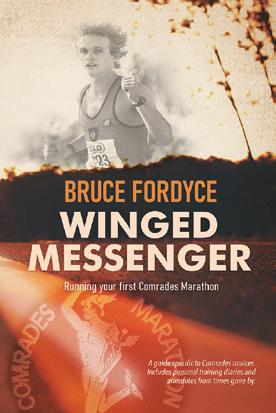
WINGED MESSENGER: RUNNING YOUR FIRST COMRADES MARATHON BY BRUCE FORDYCE
KWARTS PUBLISHERS, 2021
With a record nine Comrades Marathon titles under his belt, Bruce Fordyce (BA Hons 1979, LLD honoris causa 2007) is one runner who completely understands the demands of this ultramarathon. He has written several books for runners, but Winged Messenger is his first guide specifically written for Comrades novices.
Fordyce says the book grew out of prompting from his wife Gill. “At this time of the year, in a normal non-COVID year, I would be giving quite a few talks to novice Comrades runners at running club functions. Obviously this could not happen so I decided to write a book for novices using my old training diaries from my first year of running as a guide. The book became a nice mix of professional training advice, personal anecdotes and the history and politics of the time.”
The title refers to Hermes, the winged messenger of the gods in Greek mythology and chosen emblem of the Comrades Marathon. He is also the god of land travel, and patron of roads.
The book looks back at the year of 1976, when South Africa was gripped by a different lockdown – apartheid. Nelson Mandela is in prison on Robben Island; South Africa is isolated from the rest of the world; and revolution is in the air. Against this background, as a young student at Wits, Fordyce decides to try and take control of his life, and his destiny, and give himself a sense of purpose. He finds it running.
As self-effacing as ever, Fordyce says: “My book is fairly simple and won’t join the great classics. Harper Lee and Chinua Achebe have nothing to fear.” But novices will enjoy reading about how he took his first stumbling, rudimentary steps and how, as an ordinary runner, he began to understand the demands of the race. He says: “If you are interested in learning about how I trained for my first Comrades Marathon while leading a relatively normal life then this is the book for you.”
Fordyce lives in Parktown, Johannesburg and still runs regularly, though now with a dodgy knee. He expresses frustration at not being able to hold weekly Parkruns because of the pandemic. The Parkrun initiative, which he was instrumental in forging, has grown to 230 venues around southern Africa and boasts around 1,3 million registered members who join the Saturday morning 5km free-timed runs.

MY MOTHER, MY MADNESS BY COLLEEN HIGGS
DEEP SOUTH, 2020
In 2007 Colleen Higgs (BA 1985) started Modjaji Books, an independent publishing company, which “makes rain for southern African women writers”. Over the years many of its titles have won literary awards both locally and internationally. My Mother, My Madness is a memoir of Higgs’s secret blog entries while caring for her mother in a “luxury retirement resort” years before her mother’s death. (Roughly at the same time she started her publishing venture). The book has made it onto the 2021 Humanities and Social Science Awards longlist in the Best Non-Fiction Monograph category.
The title is a frank nod to Higgs’s own mental health battle as well as the fraught relationship with her mother, who had a history of bipolar disorder, depression and failed suicide attempts. “The blog was a way of processing and dealing with what was going on. I have had my own mental health issues, partly because of having a mother like that and maybe it’s genetic. I have tried to take it on and find help and healing,” she said in an interview in August 2020.
Higgs’s prose is sparse, matter of fact and occasionally filled with dark humour. It’s a role reversal of parenting. She details incidents of underwear flushed down the toilet, and her mother’s seemingly inexhaustible demands for Coke, cigarettes and toilet paper. All of this unearths ambivalent emotions for Higgs as a working professional, sibling, mother and wife. It is “an odd concoction of love, guilt, duty, anger, resentment, longing,” she writes. Here’s a short excerpt:
“I feel defeated and tired and yet comforted by my brother as we drive back home. My mother’s parting shot to us was, ‘Thanks for coming, even though it wasn’t very pleasant.’ This was on Monday. Today is Sunday. All week I’ve been tired, irritable and overwhelmed. It’s been one of the hardest challenges of my whole life, managing my mother in her decline. Having to make decisions for her. Hearing from her carers how impossible she is.”
Most recently Higgs’s short story “Plumbing” was included in a volume of short stories in French published by Editions Magellan. The collection is titled Minature Afrique du Sud (Miniature South Africa).

[BA 1987, LLB 1991, LLM 1999]
DR GIGI FENSTER
Dr Gigi Fenster (BA 1987, LLB 1991, LLM 1999) won the 2020 Michael Gifkins Prize for her unpublished novel A Good Winter.
Winner of 2020 Michael Gifkins Prize
The prize, open to New Zealand authors, honours the late Michael Gifkins — a New Zealand literary agent, writer, critic and publishing consultant — and is funded through a sponsorship from Gifkins’ family and Text Publishing.
She received a contract with Text, Australia and an advance of NZ$10,000 (R109 000). The novel will be published internationally in September this year.
Dr Fenster is a qualified lawyer and holds a PhD in creative writing from Victory University of Wellington. She told New Zealand’s Stuff magazine that she started writing as an antidote to loneliness she felt when she moved from South Africa and got a job with the Commerce Commission as a legal policy analyst.
She lives in Ōtaki, a town in the Kapiti Coast District of the North Island of New Zealand, and teaches creative writing at Massey University. Her debut novel The Intentions Book (Victoria University Press, 2012) was shortlisted in the fiction category of the 2013 New Zealand Post Book Awards. She teaches creative writing at Rimutaka Prison and is a member of the Write Where You Are Collective, which received a Corrections Volunteer Award in 2016.
Her second book Feverish: A Memoir (Victoria University Press, 2018) is a work of creative nonfiction that examines fever, identity and the creative mind and emerged from her PhD. She has also been awarded a Todd Bursary, a Michael King Fellowship and a CLNZ grant.










